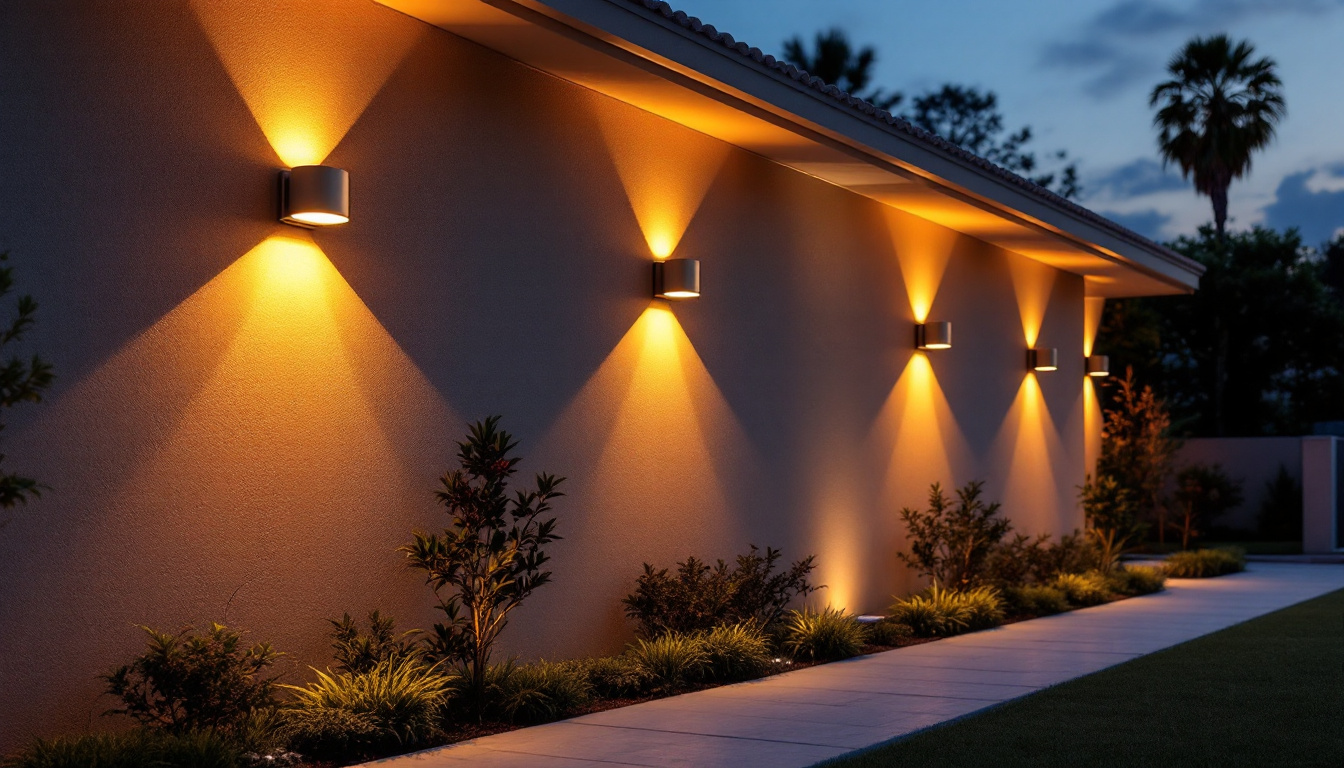
As the demand for energy-efficient lighting solutions continues to rise, recessed LED lighting has become a popular choice among homeowners and businesses alike. For lighting contractors, understanding the nuances of recessed LED replacement is crucial for providing quality service and ensuring customer satisfaction. This article delves into essential facts about recessed LED replacement that every lighting contractor should know.
Recessed LED lights are fixtures that are installed into a hollow opening in the ceiling, providing a sleek and modern aesthetic. Unlike traditional lighting options, recessed LEDs offer several advantages, including energy efficiency, longevity, and reduced heat output. These features make them an attractive choice for both residential and commercial applications.
One of the primary advantages of recessed LED lights is their energy efficiency. They consume significantly less power than incandescent or fluorescent bulbs, which can lead to substantial savings on electricity bills. Additionally, LEDs have a longer lifespan, often lasting up to 25,000 hours or more, which reduces the frequency of replacements and maintenance costs.
Another benefit is the versatility of recessed LED fixtures. They can be used for various applications, including task lighting, accent lighting, and general illumination. This adaptability allows contractors to meet diverse client needs, enhancing the overall value of their services. Furthermore, the ability to dim recessed LED lights adds another layer of functionality, allowing users to create different moods and atmospheres in a space, whether it’s for a cozy family gathering or a bright, focused work environment.
When considering recessed LED replacement, it’s essential to be familiar with the different types of fixtures available. Common options include adjustable, baffle, and reflector trims. Adjustable trims allow for directional lighting, making them ideal for highlighting artwork or architectural features. Baffle trims reduce glare and are suitable for general lighting, while reflector trims enhance brightness and are often used in spaces requiring more illumination.
Contractors should also be aware of the various sizes and shapes of recessed LED fixtures. Standard sizes include 4-inch, 6-inch, and 8-inch options, each serving different lighting needs and aesthetic preferences. Understanding these variations can help contractors recommend the best solutions for their clients. Additionally, there are low-profile options available for spaces with limited ceiling height, ensuring that recessed lighting can be installed in virtually any environment without compromising on style or effectiveness. This breadth of choice not only caters to practical lighting needs but also allows for creative design possibilities, enabling homeowners and businesses to achieve their desired look while benefiting from the functional advantages of LED technology.
Replacing existing recessed lighting with LED fixtures involves several considerations. Contractors must assess the current setup, including the existing housing, trim types, and electrical compatibility. Proper evaluation ensures a smooth transition to LED technology and maximizes the benefits of energy efficiency and longevity.
One of the first steps in the replacement process is determining whether the existing housing is compatible with LED lights. Many LED retrofit kits are designed to fit into standard housings, but it’s essential to check the specifications. If the current housing is outdated or incompatible, it may be necessary to replace it entirely.
In cases where the existing housing is suitable, contractors should ensure that the LED replacement bulbs or fixtures are compatible with the current dimming systems, if applicable. Not all LED bulbs are dimmable, and using incompatible products can lead to flickering or reduced performance.
Electrical compatibility is another critical factor in recessed LED replacement. Contractors should verify that the existing wiring can handle the wattage and voltage requirements of the new LED fixtures. Additionally, it’s essential to ensure that the circuit breakers and fuses are appropriate for the new lighting system.
In some cases, upgrading the electrical system may be necessary to accommodate the new fixtures. Contractors should be prepared to discuss these potential upgrades with clients to ensure optimal performance and safety.
The installation process for recessed LED replacement can vary depending on the existing setup and the type of fixtures being installed. However, there are general steps that contractors can follow to ensure a successful installation.
Before beginning the installation, it’s crucial to turn off the power to the circuit. This step ensures the safety of the contractor and prevents any electrical accidents. Additionally, contractors should gather all necessary tools and materials, including ladders, wire connectors, and any required mounting hardware.
Once the area is prepared, contractors should remove the existing fixtures carefully. This process may involve unscrewing the trim and disconnecting the wiring. It’s essential to take note of how the existing fixtures are connected to facilitate the installation of the new ones.
After removing the old fixtures, contractors can proceed with installing the new recessed LED lights. If using retrofit kits, these typically come with instructions for easy installation. Contractors should follow the manufacturer’s guidelines to ensure proper fitting and functionality.
Once the new fixtures are in place, it’s time to reconnect the wiring. This step should be done with care, ensuring that all connections are secure and insulated. After completing the wiring, contractors can install the trim and turn the power back on to test the new lighting system.
One of the most compelling reasons for clients to consider recessed LED replacement is the potential for energy savings. By switching from traditional incandescent or fluorescent lighting to LEDs, homeowners and businesses can significantly reduce their energy consumption.
To illustrate the cost savings, contractors can provide clients with a simple calculation. For example, if a client is currently using 60-watt incandescent bulbs and replaces them with 10-watt LED bulbs, the energy savings per bulb is substantial. Over time, these savings can add up, especially in spaces with multiple fixtures.
Additionally, many utility companies offer rebates or incentives for energy-efficient upgrades, which can further offset the initial investment in recessed LED lighting. Contractors should stay informed about available programs in their area and communicate these options to clients.
In addition to immediate energy savings, recessed LED lighting offers long-term benefits. The extended lifespan of LED bulbs means fewer replacements and reduced maintenance costs. This longevity is particularly advantageous for commercial clients who may have a higher volume of lighting fixtures to manage.
Furthermore, the reduced heat output of LEDs can lead to lower cooling costs in warmer months, contributing to overall energy efficiency. By highlighting these long-term benefits, contractors can help clients understand the value of investing in recessed LED lighting.
While recessed LED replacement offers numerous advantages, contractors may encounter challenges during the process. Understanding these potential issues and having solutions ready can enhance the overall client experience.
One common challenge with LED lighting is flickering, especially when used with existing dimmer switches. This issue often arises from incompatibility between the LED bulbs and the dimmer. To address this, contractors should recommend compatible dimmers designed for LED use. These dimmers help ensure smooth operation without flickering.
If flickering persists, it may also be necessary to check the wiring and connections. Loose connections can lead to inconsistent power delivery, resulting in flickering lights. Ensuring all connections are secure can often resolve this issue.
Another challenge contractors may face is helping clients choose the right color temperature for their recessed LED fixtures. LEDs are available in various color temperatures, ranging from warm white to cool daylight. Contractors should educate clients on the differences and help them select the best option for their space.
Additionally, the quality of light produced by LEDs can vary between manufacturers. Contractors should recommend reputable brands known for their consistent color quality and performance. This guidance can help clients achieve the desired ambiance in their spaces.
The lighting industry is continually evolving, with new technologies and trends emerging regularly. For lighting contractors, staying updated with these developments is essential for providing the best service to clients.
One area of growth in the lighting industry is smart lighting technology. Smart recessed LED fixtures can be controlled via smartphone apps or voice-activated devices, offering convenience and flexibility. Contractors should familiarize themselves with these products and be prepared to offer smart lighting solutions to tech-savvy clients.
Additionally, advancements in LED technology continue to improve energy efficiency and light quality. Keeping abreast of these changes can help contractors recommend the latest and most effective products to their clients.
Investing in continuing education and training is crucial for lighting contractors. Many organizations offer workshops, webinars, and certifications focused on the latest lighting technologies and installation techniques. Participating in these programs can enhance a contractor’s skills and knowledge, ultimately benefiting their clients.
By staying informed and continuously improving their expertise, contractors can position themselves as trusted advisors in the lighting industry, ensuring they meet the evolving needs of their clients.
Recessed LED replacement presents a valuable opportunity for lighting contractors to enhance their service offerings and meet the growing demand for energy-efficient lighting solutions. By understanding the benefits, installation processes, and potential challenges associated with recessed LED lighting, contractors can provide informed recommendations to clients.
As the industry continues to evolve, staying updated with the latest trends and technologies will be essential for success. By investing in education and maintaining a focus on customer satisfaction, lighting contractors can thrive in this competitive market and help clients achieve their desired lighting goals.
Ready to elevate your lighting installations with the best in the business? Look no further than LumenWholesale for all your recessed LED replacement needs. Our commitment to quality and affordability ensures that you have access to spec-grade lighting products at wholesale prices that simply can’t be beaten. Say goodbye to unnecessary markups and hello to a vast selection of reliable, high-performance lighting options. Plus, with free shipping on bulk orders, you can stock up on premium lighting solutions without worrying about hidden fees. Don’t compromise on quality or cost—choose LumenWholesale for the perfect blend of value and convenience. Wholesale Lighting at the Best Value is just a click away.

Discover essential tips and innovative strategies for lighting contractors to master the use of solar outdoor lights.

Discover expert insights on exterior wall lighting from leading contractors.

Discover how high bay LED lights are revolutionizing the lighting industry, offering energy efficiency, enhanced illumination, and cost savings for contractors.

Illuminate your understanding of landscape lighting systems with this comprehensive guide tailored for lighting contractors.